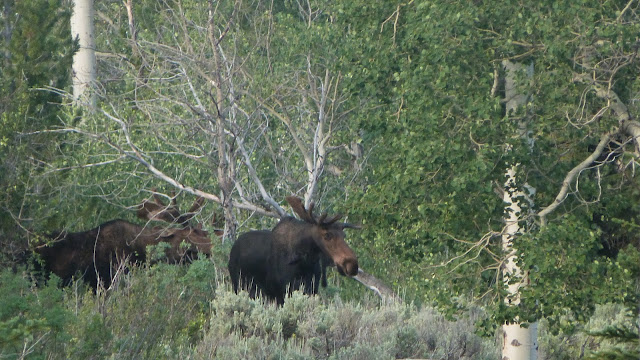After a couple of days in Red River, New Mexico we are ready to move on through Colorado into Wyoming. We're interested to see if the Colorado Springs wildfires really "destroyed" the city as the news media made it out to seem.
To reach Colorado Springs we go through the oldest town in Colorado, San Luis Obisbo. (Note to their economic development and historic committees: I tried to google them and essentially came up with zip. Lots on San Luis Obisbo in CALIFORNIA, but not Colorado.) It's a pretty place, visually transitioning from New Mexico to Colorado in landscape and architecture. I wouldn't mind wandering the streets of downtown, but we don't know what kind of SNAFU's we'll encounter in Colorado Springs, so we move on.
Remember Charles Goodnight of Palo Duro fame? After his initial cattle drive of 1866, he and his partner ended up just west of Colorado Springs settling 30,000 head of cattle at Rock Canon Ranch. Over the next two decades those 30,000 head would become over 1 million head of cattle.
Goodnight was here until 1870 when an economic downturn cost him his shirt, and he high-tailed it back to Texas to financially start all over.
Colorado Springs was established in 1871 by a railroad executive, William Jackson Palmer, to appease his wife, Queen Meflen. She was a la-dee-da New York fancy pants that wished for more refinement in the West. Well, duh! New York had a couple of hundred years of development on Colorado! Whaddya expect, lady?
So, anyway, Palmer had a plan - and it worked. Soon the little town filled with authors, painters, and "persons of high breeding" (I wonder if those high-breds realized that they sounded like a bunch of barn yard experiments when it was put like that ??) To me it's a contradiction, but supposedly the "scenic wonders, healthy climate, and opulent hotels" drew so many Englishmen that it was dubbed "Little London." Well, I thought London by this time was dirty and dark, full of smog and urban crime... See what happens when I get to thinkin'? But it
was about this time that Charles Dickens wrote "David Copperfield"...
So Colorado Springs basked in the glow of refinement - until the Cripple Creek gold strike of 1890.
Within ten years the population tripled, but these men weren't wearing starched collars I can tell ya' for sure. Dusty men, sweating animals, and enterprising money grubbers were the newest citizens. Unfortunately, after the gold rush waned, Colorado Springs was left to tourism and tuberculosis sanatoriums.
World War II had the next great impact on Colorado Springs, bringing the U.S. military and NORAD (North American Air Defense Command) here. All these folks turned Colorado Springs into one of the great Rocky Mountain cities.
The much touted wildfires? We never saw any indication of them from the Interstate and traffic never even slowed through Colorado Springs or Denver. Though the Air force Academy is practically on the Interstate, and it had been evacuated at the height of the fire threat, we saw no sign of where the fires had been. Sometimes I worry about the media hyping things to make you watch them...



















































